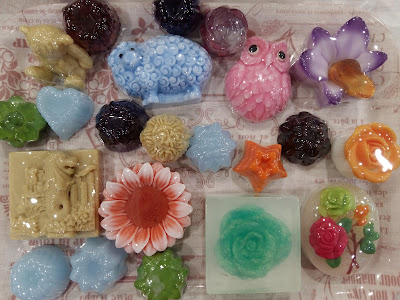[Pre-180, My SJI Days] Learning Shogi and Hanafuda at SJI Japanese Club (JCC)
(Photograph from Go Go Nippon Blog, Credits to its owners)
Shogi or what we call the 将棋, is Japanese's take on chess. As my JCC friend Stanley explains, "The basic rules, aside from dropping is similar to (Chinese) chess. You move your soldier over another to capture the said piece. Each type of unit has their own movement type but can be promoted when they approach the 3rd row of the enemy’s side. The board in Shogi is 9 x 9 and the pieces are arranged as such when the game starts."
Therefore, in my opinion, Shogi should be a game that is almost like the Chinese Chess. However, the Shogi has many other different rules and exceptions which makes it pretty confusing. For instance, each unit of the Shogi chess can be 'promoted' to undertake different roles. As such, I always get stuck while I was playing the game.
On the other hand, the Hanafuda is pretty simple to learn. Hanafuda is more commonly known as the 'Flower Cards', ' 花牌', and even 'Go-Stop' in Korean! Being an avid Kpop fan (aside from being a J-Culture lover), I was introduced to the game while watching my Korean dramas. It was, nevertheless, during my time in JCC where I got to fully understand and appreciate the addictive game.
The Hanafuda 'works' like this.
(Hanafuda Cards; Source: shinpaideshou.wordpress.com)
"Rules of play
Cards are shuffled and placed into a pile (called the stock). Eight cards are placed face up between the players, and then eight cards are dealt face-down to each player. If there are more than two players, then the hand size is decreased.
Play
Play starts with the dealer. The player takes a card that was dealt to them and matches suit with a card that is on the table. If there isn't a matching card, the player discards a card to the center of the table. Then, the top stock card is turned face up, and if there is a matching suit on the playing field, the player takes the cards, otherwise the stock card is added to the playing field.
Play ends when either the stock is exhausted or either player's hand is empty.
If a player is dealt four pairs or two complete suits, that player automatically wins the round. Scoring for this instance varies, but can be the value of the cards in the playing field.
Hiki
If there are a number of cards on the playing field of one suit, and a player has the rest of the suit in hand, this is a hiki. The player may take the entire suit of cards on their turn instead of playing a card from their hand. Trying to take a card from a hiki with the storm card is an illegal move. If the cards are dealt so that all four of one suit are on the playing field, the cards are shuffled and redealt. If three cards are on the table, they are stacked together and the remaining card takes all three.
Scoring
At the end of the round, each player adds the value of all cards they have taken. In some variations, 'winner takes all', meaning the winner of the match gets all the points the opponent has accumulated in that round. Card sets and scoring can vary by which variant of Hanafuda is being played.
Oya-gachi
In case of a tie, dealer wins. If the dealer isn't involved with the tie, the player closest to the dealer's left wins."--From Wikipedia, Hanafuda
So it basically involves the matching of cards and it seems pretty easy to play the game. While I may not be really good in the game per say, my beginner luck had served me well as I got to win my JCC friends, Stanley and Hans on my first few tries. It was extremely fun, and I got to have a deeper understanding of the rules of the game. (Previously I had only thought of Hanafuda as a complex game like Mahjong, but its actually less complex than that) :)




Comments
Post a Comment